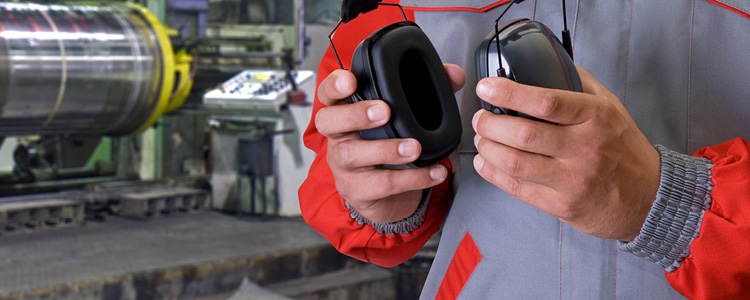Model:
Your Model No.:
Mfr. Model No.:

According to CSA Standard Z94.2-14, workers require hearing protection when the average noise level during an eight-hour work shift exceeds 85 dBA. To determine the extent to which noise levels affect the work environment, a noise assessment is required. This not only allows for the proper hearing protection to be determined based on the environment, but also prevents the risk of overprotection that can lead to other issues, such as loss of communication and lack of situational awareness. Other environmental factors to consider include temperature and humidity, as well as cleanliness levels that could make inserting foam earplugs with clean fingers a challenge.
When you feel the need to shout in order to be heard three feet away, the noise levels are probably 85 dBA or more and hearing protectors are recommended.
According to CSA Standards Z94.2-14 and Z1007-16, the appropriate hearing protection device shall be chosen based on attenuation and noise exposure levels using one of the following four methods:
Once environmental factors are determined and a selection process has been chosen, the final step is to consider the individual worker. When it comes to hearing protection, there is no one-size-fits-all option and the following factors should be taken into account when determining the necessary device.
Employees should be trained on a regular basis to ensure they understand how noise exposure affects their health and how to properly select, wear and care for their HPDs.
It’s important not to underestimate the value of comfort in selecting hearing protection, as it is more likely for a worker to wear a comfortable HPD correctly in noisy environments.
Workers with existing hearing loss must also be considered. Ensuring that they are provided with the proper HPD to preserve their hearing and work comfortably is important.
Choosing the proper devices for certain workers who might have difficulty rolling down earplugs or using the proper insertion technique due to mobility issues is similarly critical.
Limiting hearing protection to one option will not address the needs of all workers. Having several options to choose from will promote comfort and compatibility for each individual.
Finding the perfect balance between hearing protection and the ability to communicate is made easier by built-in microphones and other technology built in to certain HPDs.
Measuring the amount of protection each individual worker receives from their hearing protection device is sometimes difficult. Fit test equipment can help ensure a proper fit.
Max quantity is 999999999. Your cart item has been updated
Model:
Your Model No.:
Mfr. Model No.:
Qty.: